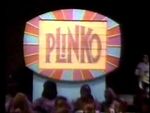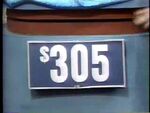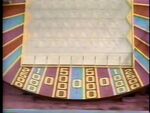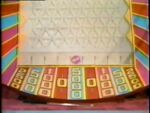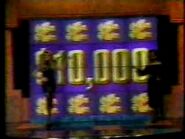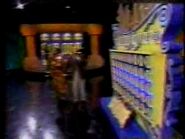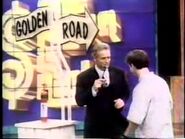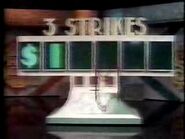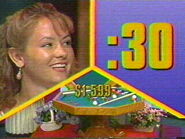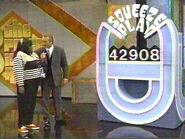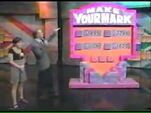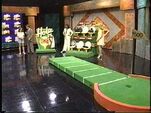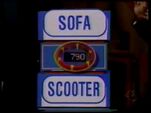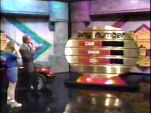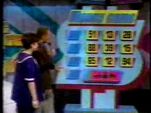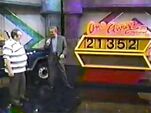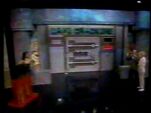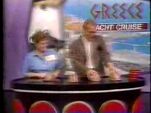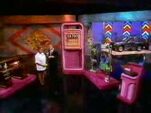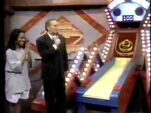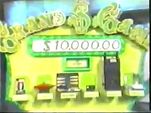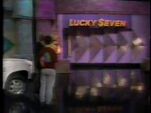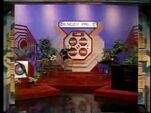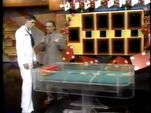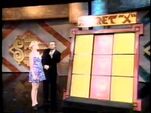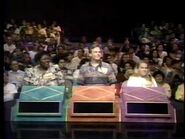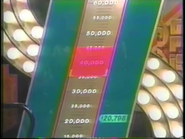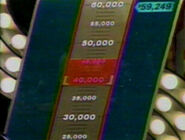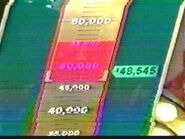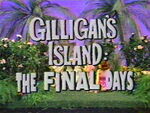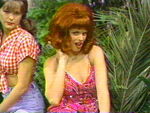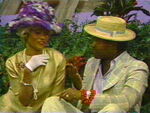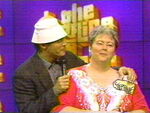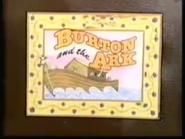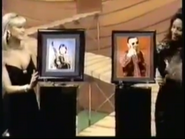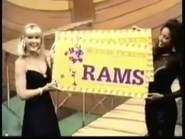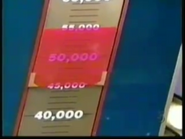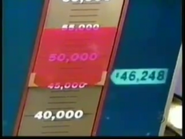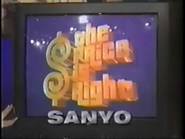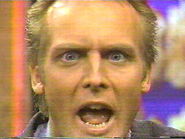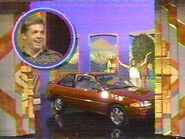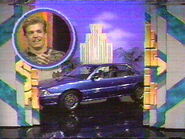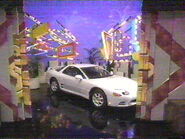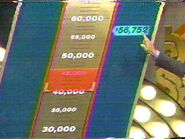A short lived 80-episode syndicated version of The Price is Right hosted by Doug Davidson of The Young and the Restless, featuring elements never before seen on any version of TPiR, including among other things, the removal of Contestant's Row, and the replacement of the Turntable with a video wall.
Pricing Games
Some pricing games on The New Price Is Right (not to be confused with the current version's original title) were played with slight modifications to the rules as played on the daytime version. Games which usually featured grocery products were played with unwinnable small prizes instead (e.g., Golden Road, Grand Game and Hole in One (or Two)), and some games featured other experimental rule changes.
- Barker's Markers: The name was changed to "Make Your Mark" the single time it was played on this version of the show, as Bob Barker was not the host of this version. This name was adopted on the daytime show in 2008 when Drew Carey became the host.
- Clock Game: The game was digitized, with no prop on stage for it, and the contestant was provided with a $1,000 range in which to guess the price of each prize. The game frequently used prizes with four-digit prices. On some occasions a third prize was awarded as a bonus for winning (a rule change which was adopted on the daytime version in 2009).
- Hole in One (or Two): Small prizes were used instead of grocery items. When an item was chosen, its price was immediately revealed and then placed in line if it was higher than the previous prize chosen. On the daytime version, the price flags are arranged in line according to the contestant's choice before the prices are revealed.
- Magic #: This used a Double Prices-like prop to hold the prices of the two prizes rather than the models hold them. The Magic Number set by the contestant playing was superimposed in between.
- Plinko: While the top prize remained the same at $5,000 per chip for a potential total of $25,000, two configurations of slots were utilized (one of which featured replaced the outer $100 slots with two $2,500 slots). The method of earning chips was also changed from choosing the right number in the right position to a higher/lower pricing format with smaller prizes worth up to $400.
- Punch-A-Bunch: During some playings, Davidson pulled the slip out of the hole as soon as it was punched. The player then decided to keep the money or punch another hole. On the daytime show, the slips are not revealed until the contestant has made all of his or her initial punches.
- Safe Crackers: Instead of having the secondary prize (the one in which its price doubles as the safe's combination) inside the safe with the main prize, the secondary prize was outside the safe and talked about after the model locked the door.
- Super Ball: Instead of waiting until guessing all three small prizes before rolling the balls, the player rolled after each correct guess.
- 3 Strikes: The first number was lit at the beginning of the game and the number could repeat elsewhere in the price. Four chips representing the remaining numbers in the price were then placed into the bag with three strike chips. These rules were adopted on the daytime show in 2008, but the game's original rules returned in 2009. Also, the super-imposed "NO" sign for misplaced numbers was replaced with a red box which appeared around the space where the contestant thought the number he/she pulled out belonged in; it melted down the on the screen if the contestant was wrong.
Running Gags
To add comedy to the show, some running gags (besides Doug Davidson's improv) were present:
- Hole in One: If the contestant missed his/her first putt, Doug would mindlessly wander around, feeling sorry for the contestant, until he'd accidentally press the button that flips the sign that says "ONE" to the other side that says "OR TWO."
- Make Your Mark: Although only played once (and sadly a loss), the comedy bit that would have been the running gag consisted of Doug giving the contestant $100 to start with, only to have the producer walk out and remind him the correct amount was $500.
- Cliff Hangers: Doug referred to the mountain climber as "Hans," similar to how Dennis James referred to him as "Fritz," and Drew Carey referring to him as "Yodely Guy."
- Magic #: Doug referred to the Magic # props as the "geezmo" and the lever as the "leever."
Gallery
Showcase Showdown
The Showcase Showdown was played with the traditional Big Wheel (in which the spinners were ordered from highest to lowest), but it mostly used a new format called "The Price WAS Right." This was played like the One Bid games in the daytime version. The three players stand in front of a quasi-Contestant's Row, arranged either by least to most winnings or by the order they were called. A vintage commercial for a product was presented to the three contestants who were then asked to bid on what the product cost at the time the commercial first aired. The contestant with the closest bid without going over advanced to the Showcase. In the event that all three contestants overbid (which rarely happened), the bids were erased and began again, with Davidson instructing contestants to bid lower than the lowest bid in the previous round. No bonus was awarded for a "Perfect Bid."
The Showcase
The Showcase was also changed, with only one person playing the Showcase, the pricing game Range Game was modified for this round. A new prop was built with a $60,000 scale ($10,000 to $70,000). During the show's final commercial break, the winner of the Showcase Showdown chose a range at random between $3,000 and $10,000 (in $1,000 increments).
A single showcase was then presented. Once it was finished, the rangefinder was started up the scale. The contestant pulled a lever when they thought the showcase value was contained within the range. If correct, the contestant won the showcase, which was generally worth between $20,000-$60,000, comparatively higher than average showcase values on the daytime show (which, at the time, offered showcases usually worth between $10,000-$30,000).
Although this Showcase format was unsuccessful in the United States, a modified version of this is used on versions of the show in other countries.
A music package by Edd Kalehoff was made for this version, along with some recycled cues from the daytime version thrown in for certain events. This package was recycled into the daytime, Million Dollar Spectaculars and Gameshow Marathon episodes after this version's cancellation. The theme and its "Come On Down" cue were also carried over to European versions of the show, notably "Bruce's Price Is Right".
